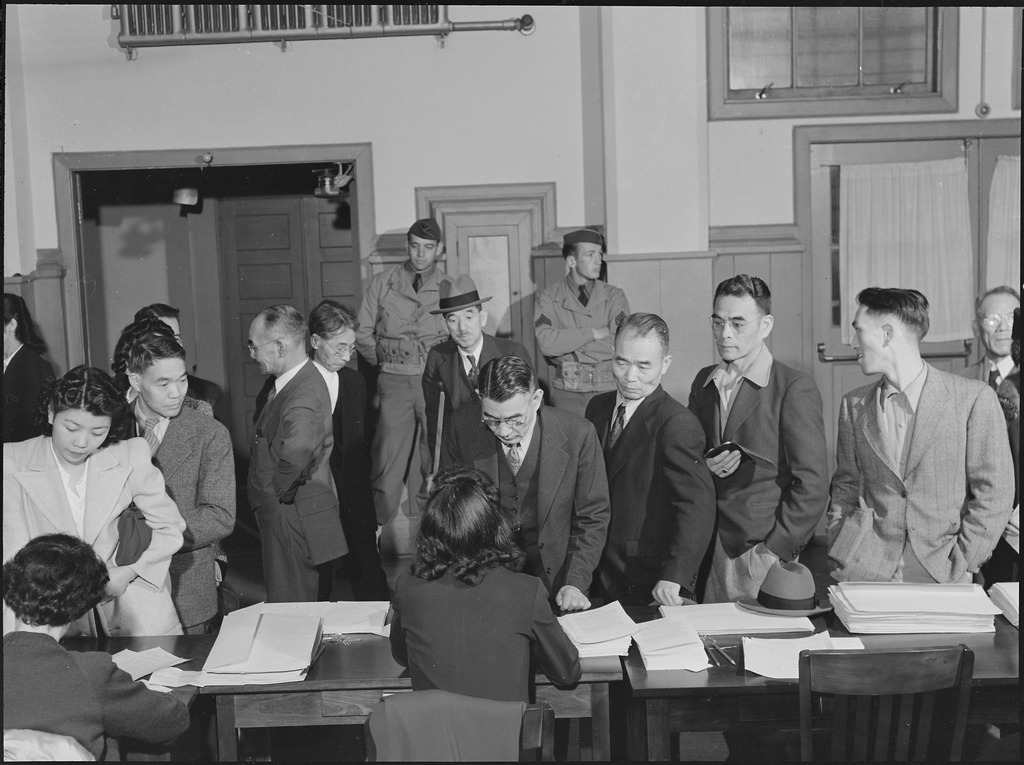November 23, 2016
Densho content director Brian Niiya breaks down the historical fact-based disparities and parallels between the Muslim registry and Japanese American incarceration:
1.There was no registry that specifically targeted Japanese Americans prior to World War II. Under the Alien Registration Act, also known as the Smith Act, passed in 1940, all aliens in the U.S. age fourteen and older were required to register and be fingerprinted. Under the auspices of this act, some five million aliens were registered.
2. Both before and during World War II, there were many laws that specifically targeted Japanese Americans, in the same way that the proposed Muslim registry would target a specific group. The most notable pre-war examples included the so called alien land laws and the ban on naturalized citizenship. (While the alien land laws did not specifically name “Japanese Americans”—in the same way that that Executive Order 9066 did not—the laws were aimed at them.
3. After the outbreak of war, Japanese Americans faced a series of restrictions aimed specifically at them prior to their mass exclusion and subsequent forced removal from the West Coast. These included:
Public Proclamation No. 1, issued March 2, 1942, which established Military Areas 1 and 2 and required enemy aliens and all persons of Japanese ancestry in area 1 to file a “Change of Residence Notice” “not more than five, nor less than one day prior to any change of habitual residence.”
Public Proclamation No. 2, issued March 16, 1942, which extended the “Change of Residence Notice” to the entire Western Defense Command
Public Proclamation No. 3, issued March 24, 1942, required enemy aliens and all persons of Japanese descent in Military Area 1 to be home between 8 pm and 6 am and to not be more than five miles from home at other times, except to be at work or en route.
4. In the course of their mass forced exclusion and incarceration, Japanese Americans had to register at least twice. When notified of their impending exclusion in the spring and summer of 1942, one person per family was required to report to a neighborhood “Civil Control Station,” where they would be assigned a family number, issued the infamous tags for their baggage and their persons, and given information about where to report to be taken by bus or train a few days later to a concentration camp. Later, in the early months of 1943, incarcerated Japanese Americans aged seventeen and older were required to register by filling out a form titled “Application for Leave Clearance” that become informally known as the “loyalty questionnaire.” The ill-conceived form sought to separate the “loyal” for the “disloyal” for the purpose of determining who would be eligible to serve in the military or to eventually leave the concentration camps. But the unintended consequences of this registration led to turmoil in the camps and deep divisions in the Japanese American community that persist to this day.
—
[Blog header: Original caption: San Francisco, California. The residents of Japanese appear at 2031 Bush Street, for information on evacuation. Evacuees will be housed in War Relocation Authority centers for the duration. April 25, 1942. Photo by Dorothea Lange, courtesy of the National Archives and Records Administration.]
